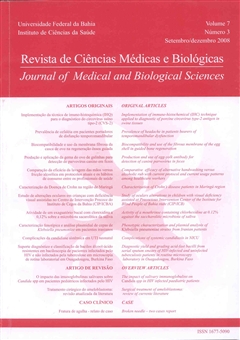Comparative efficacy of alternative handwashing versus alcoholic rub with current protocol and current usage patterns among healthcare workers
DOI:
https://doi.org/10.9771/cmbio.v7i3.4465Keywords:
Hand hygiene, Alcoholic rub, Nosocomial infection.Abstract
Hand hygiene is a primary mechanism for reducing contact transmission of infectious agents. We evaluated the efficacy of hand hygiene agents under condition in which they are currently being used by healthcare workers. A total of forty Healthcare Workers (HCWs) and office workers in a teaching hospital washed their hands with procedures using soap and water, and alcohol-based gel, with and without standardized protocols. A total numbers of colony - forming units on the hands were 3.52 and 4.48 for the HCWs and non-patient staff hands, respectively (p< 0.05). The average reduction in the number of organisms before and after hand hygiene of any procedures showed always statistically significant differences by both standardized and non-standardized procedures, and they all demonstrated similar results when compared to each other, with only two exceptions. There was no difference in the proportion of HCWs or non-patient staff with Staphylococcus aureus and Gram- negative rods on their hands. This study demonstrated that the regular usage of alcohol gel is as good as handwashing with soap and water, and could increase compliance in the hand hygiene, especially in situations where there is a lack of sinks or HCWs are overworked.Downloads
Download data is not yet available.
Downloads
Published
2008-04-04
How to Cite
Borges, L. F. de A. e, Silva, B. L., & Gontijo Filho, P. P. (2008). Comparative efficacy of alternative handwashing versus alcoholic rub with current protocol and current usage patterns among healthcare workers. Journal of Medical and Biological Sciences, 7(3), 249–254. https://doi.org/10.9771/cmbio.v7i3.4465
Issue
Section
ORIGINAL ARTICLES
License
The Journal of Medical and Biological Sciences reserves all copyrights of published works, including translations, allowing, however, their subsequent reproduction as transcription, with proper citation of source, through the Creative Commons license. The periodical has free and free access.


